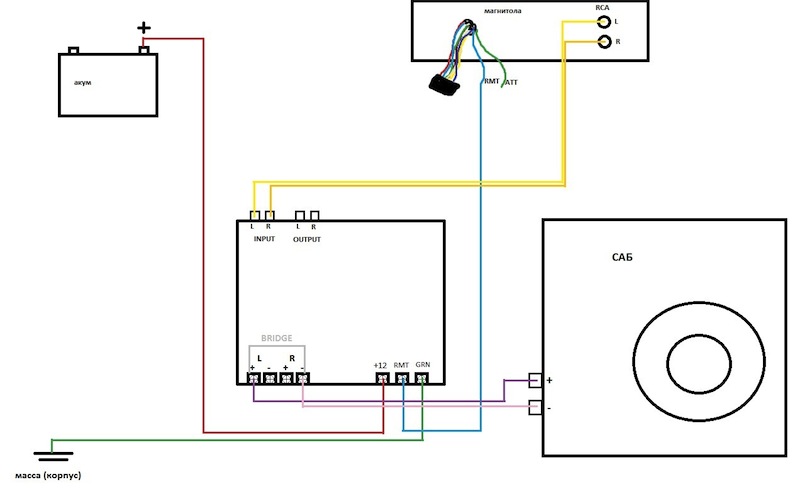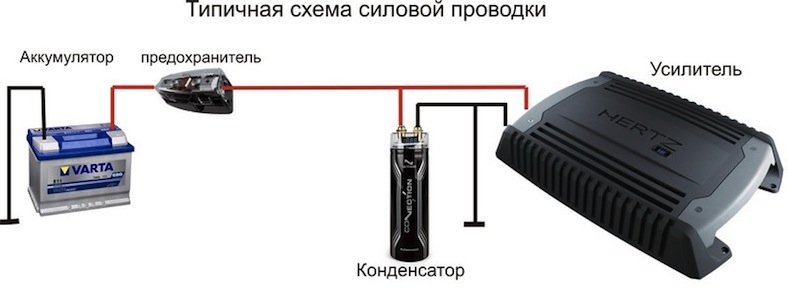How to connect a subwoofer in a car
The good sound of music in the car is a guarantee that you can always enjoy your favorite songs and the sound quality will be on top. Unfortunately, not all car manufacturers install a good stereo system in the cabin, and music lovers have to think about the question - how to make music sound good.
A subwoofer is a speaker that can reproduce low frequencies in the range of 20 to 200 hertz. An ordinary full-time audio system is not capable of coping with this task (unless, of course, you have a D-class car for several million. So the question arises - how to choose and connect a subwoofer.

There are many, many recommendations on this subject. It is worth first deciding what types of subwoofers are and which one is best to install in a car of a certain class.
Active subwoofers are characterized by the presence of a power amplifier and a crossover, which eliminates all unnecessary frequencies. This type of subwoofer localizes low frequencies well and reproduces them without overloading the head amplifier.
Passive subwoofers are not equipped with power amplifiers and therefore tuning them is very difficult, as the result can be an imbalance in sound.
There is also LF subwoofers, which are separate speakers, and already the case for them needs to be made independently. These subwoofers can be installed anywhere in the car.

Where the subwoofer will be installed depends on the type of car body:
- sedans - for such cars, the rear shelf will be the most suitable place to install a subwoofer, although you can install them in the doors and even in the front panel;
- hatches and station wagons - the best place to install a “subwoofer” will be the trunk, where you can put active subwoofers that are already completely ready for use or independently make a case for passive and low-frequency ones;
- if you drive a convertible or roadster, then usually subs are installed in the trunk lid, while two woofers are used to improve sound quality.
These are the recommendations of specialists, and each owner decides for himself the question of where to install the subwoofer.

An important point is the very connection of the subwoofer to the car's audio system. In doing so, the following questions need to be addressed:
- is it possible to connect a subwoofer to your radio;
- how the cables from the subwoofer will run;
- Where is the subwoofer fuse located under the hood?
Powered subwoofers are the easiest to connect because they have all the outputs and connectors, as well as cables.
An active sub is connected to the radio using a single line cable, there must be a special connector on the back cover of the radio, if it is not there, then you either have to buy a new one or take a soldering iron in your hands to look for circuits for connecting the sub. Two more wires should provide power to the amplifier, the positive wire to the positive terminal of the battery, the negative wire to the minus.
It is also important to install a fuse near the battery, and hide all the wires nicely under the skin of the car.
Passive and low-frequency subs, in principle, are connected in the same way, but there is one small difference - they require a parallel connection of the amplifier. If the head unit provides for an amplifier, then there should be no problems - the speaker cable is pulled to the subwoofer, and all settings are made through the amplifier. Also, the subwoofer is also powered through the amplifier, and not from the battery, so you just need to connect the negative and positive outputs and clamps.
In general, that's all. But if you are not confident in your abilities, or are afraid to screw up, then it is better to call on a service where everything will be done quickly and humanly.
This video contains instructions for installing a sub and amplifier using the example of Subaru Forester.
Another easy installation guide using the Sony XS-GTX121LC subwoofer and Pioneer GM-5500T amplifier as an example
Loading…